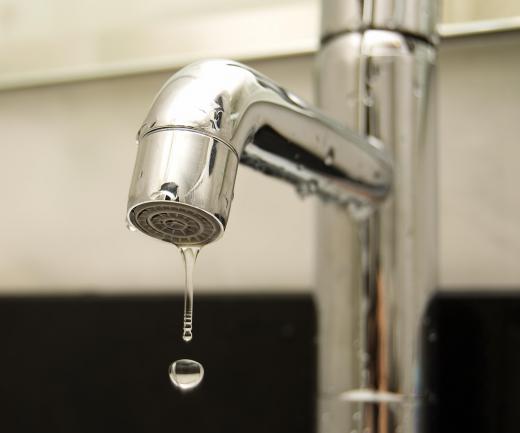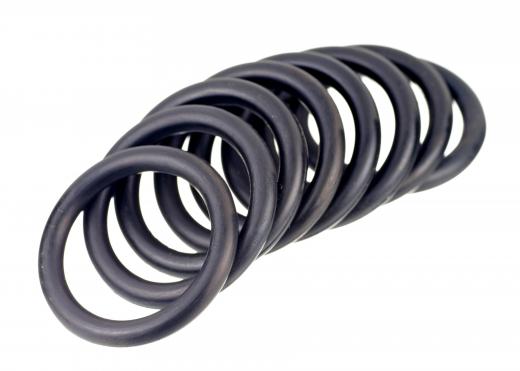A packing ring is a ring of material inserted into a pressurized connection to create a tight seal. Packing rings are also known as sealing or O-rings, or simply packing, depending on the context. They are used in a wide variety of mechanical and pressurized systems to control pressure, prevent leaks, and increase efficiency. Replacement parts are available through hardware and specialty stores for various systems.
Some consumers may be familiar with one kind of packing ring; the small seal placed in faucets. This ring is made from rubber, a flexible material that deforms readily under pressure. When it is screwed tightly into the faucet, it prevents leaks, even when the water pressure pushes against it. This particular type of ring, known as a washer, will eventually begin to leak when it fails mechanically. The rubber may age and crumble, or could start to crack and create leaks because of uneven pressure.

Rubber is a very popular material for packing rings, but plastics and metals may be used in some applications. In extreme cold, rubber becomes inflexible and can be quite brittle. It may fail in these conditions and could create a catastrophe; the space shuttle Challenger blew up in the 1980s as a result of a failure in a single rubber O-ring. Rubber is also not suitable for connections made in a vacuum because of its permeability, so for vacuum sealing other materials are necessary.

At the connection, the packing ring needs even compression to seal effectively. Differentials in compression along the ring can create leaks. The material should be rated for the application, as some materials will simply fail under very high pressure. Systems are typically overengineered, with a ring rated for pressures much higher than those that actually occur. If a problem develops in the system and the pressure spikes, the packing ring should be able to hold until a technician can address the issue.

Various packing ring designs are available, including nesting and stacking products, along with rings that have recesses or other features to fit snugly into a system. For some systems it is necessary to use proprietary products that have been carefully designed to fit the system perfectly, while in others generic replacements are acceptable. Washers for sinks, for example, are readily available from a number of manufacturers, and the consumer simply needs to get the right size. Some rings also come large, allowing the customer to trim them down to size to fit snugly.
Ever since she began contributing to the site several years ago, Mary has embraced the exciting challenge of being a About Mechanics researcher and writer. Mary has a liberal arts degree from Goddard College and spends her free time reading, cooking, and exploring the great outdoors.

